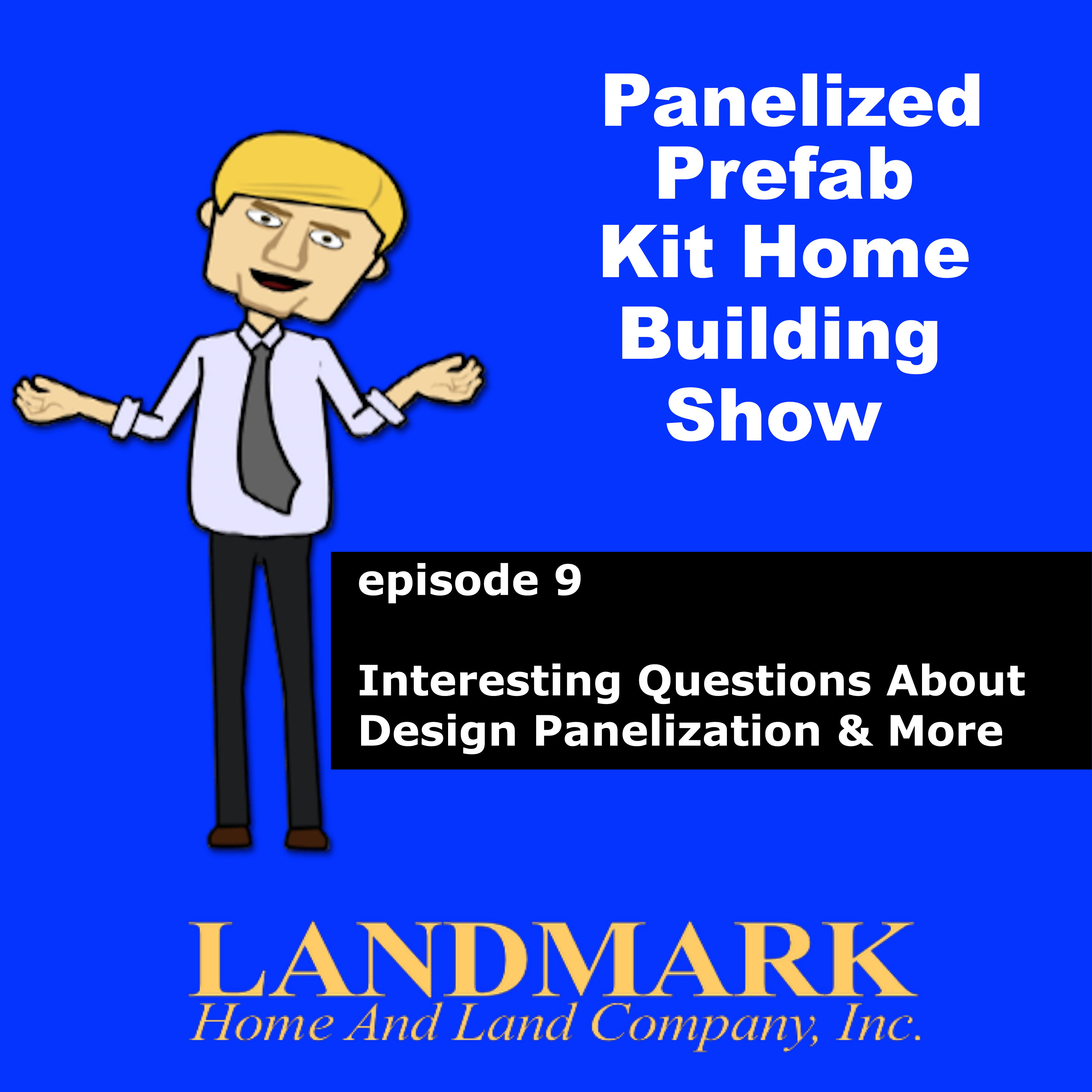Questions About Design Panelization

b'
\\nShow Notes:
\\nInteresting and common questions. Benefits of different foundation types. Designing your kitchen and bathrooms. How are panelized home kits priced. Energy calculations and building permits. Lot coverage and setbacks. Siding for my custom panelized home.
\\nTranscript:
\\nInterviewer: Hey everyone. Welcome to another episode of the Panelized Prefab Kit Home Building Show. With me as always is the President and Founder of Landmark Home and Land Company, a company which has been helping people build their new homes where they want, exactly as they want across the nation and worldwide since 1993, Steve Tuma. How are you doing, amigo?
\\nSteve Landmark: Doing excellent. How are you doing today?
\\nInterviewer: I\\u2019m great. So in the last couple of episodes, we\\u2019ve been doing this thing where you\\u2019ve been asking general questions from customers and prospective customers of Landmark\\u2019s coming to you through the website and I thought we would continue that. It just seems to be a good format for us to go with and it gets right to the people. If you\\u2019re good with that, I would like to kind of continue with this episode.
\\nSteve Landmark: Yeah, I think that makes sense. It will be informative for people. You know, get them maybe a step ahead, maybe two steps ahead if we give them some basic questions and some basic answers that are common for people in pretty much any project no matter what state you\\u2019re building in or if you\\u2019re building on a hill or flat land or whatever the building site may be. There are some basic questions that I think we can answer.
\\nInterviewer: Good. Yeah, it\\u2019s very American to go right to the people. So we\\u2019re going to start off here with a question from a customer that\\u2019s asking Landmark, \\u201cWhat are the benefits of the different foundation types, basement, crawlspace, slab, piers?\\u201d Can you answer that?
\\nSteve Landmark: Yes. They each have their benefits and sometimes it\\u2019s just a regional acceptance of it. So basements are very common in the Midwest because there aren\\u2019t really \\u2013 you know, the ground, you can dig into it. It\\u2019s usable. It\\u2019s very common. Sometimes it\\u2019s tornado shelters. It\\u2019s also something where a basement is a very affordable space to finish out. You know, say if you were on a hill, like a walkout to a lake or just a walkout to the backyard. You could finish that basement for relatively little money and then double the size of your home. Crawlspaces are more maybe if there\\u2019s a limitation as to why you can\\u2019t go down deep or some people just don\\u2019t like basements. A slab is basically a cement slab just laid right on top of the ground. That\\u2019s something more in Southwest California where that\\u2019s more common.
\\nNow any of these foundations can go anywhere in the country. It\\u2019s just what\\u2019s more typical and then piers are unique. So I\\u2019m kind of summarizing each one. We will get on some details. But piers generally go in an area with floods. But what\\u2019s interesting about piers is we are getting people that want to have low environmental impact foundations.
\\nInterviewer: Right.
\\nSteve Landmark: So they don\\u2019t want to tear the side of a hill up or whatever it might be in. They would just use piers because they\\u2019re in a smaller home. It\\u2019s easier to put in. Some people can actually just put piers in and not have to go through the whole cost of the foundation. But that\\u2019s the basic summary on it. But let\\u2019s go through them again.
\\nSo basically, a basement would be if you want the living space underground and sometimes exposed for like a walkout situation. If you grew up with a basement, you\\u2019re probably going to want a basement. Some people use basements just for storage. Other people, it\\u2019s for man caves, workshops, drive-under garages, whatever it might be.
\\nYou can put your mechanicals down there, plumbing. All your plumbing will be down there, your heating systems, water tanks, different things like that,'